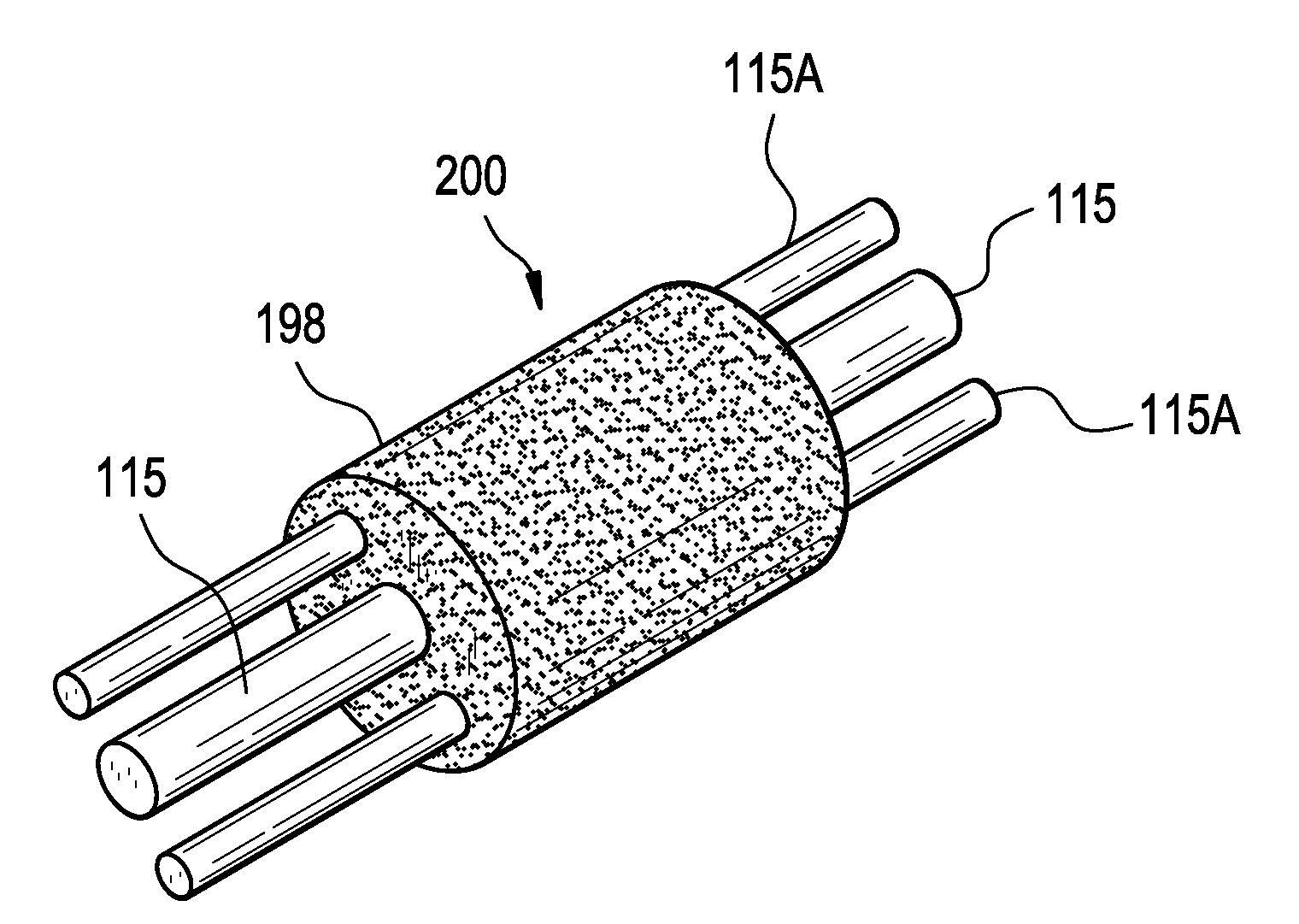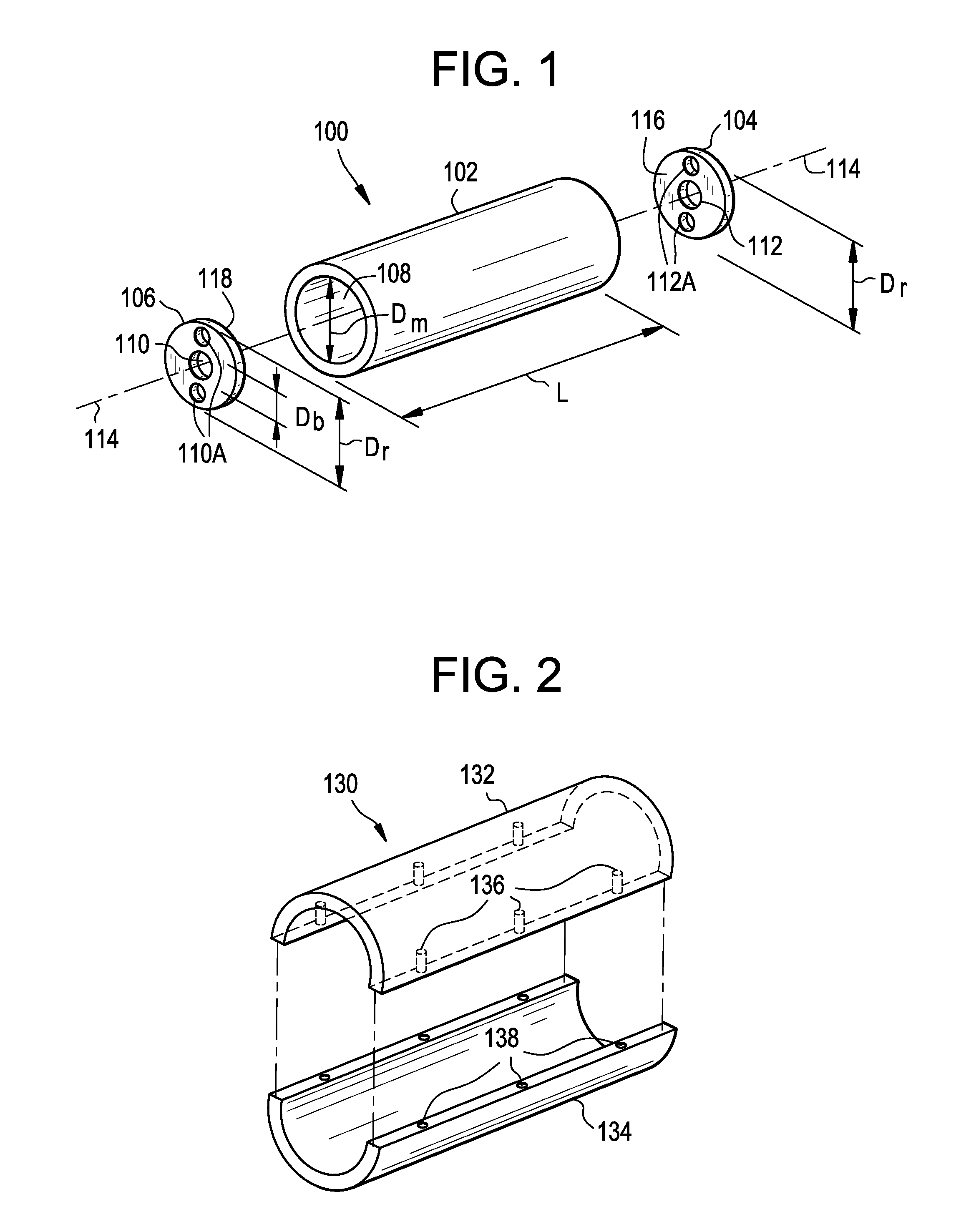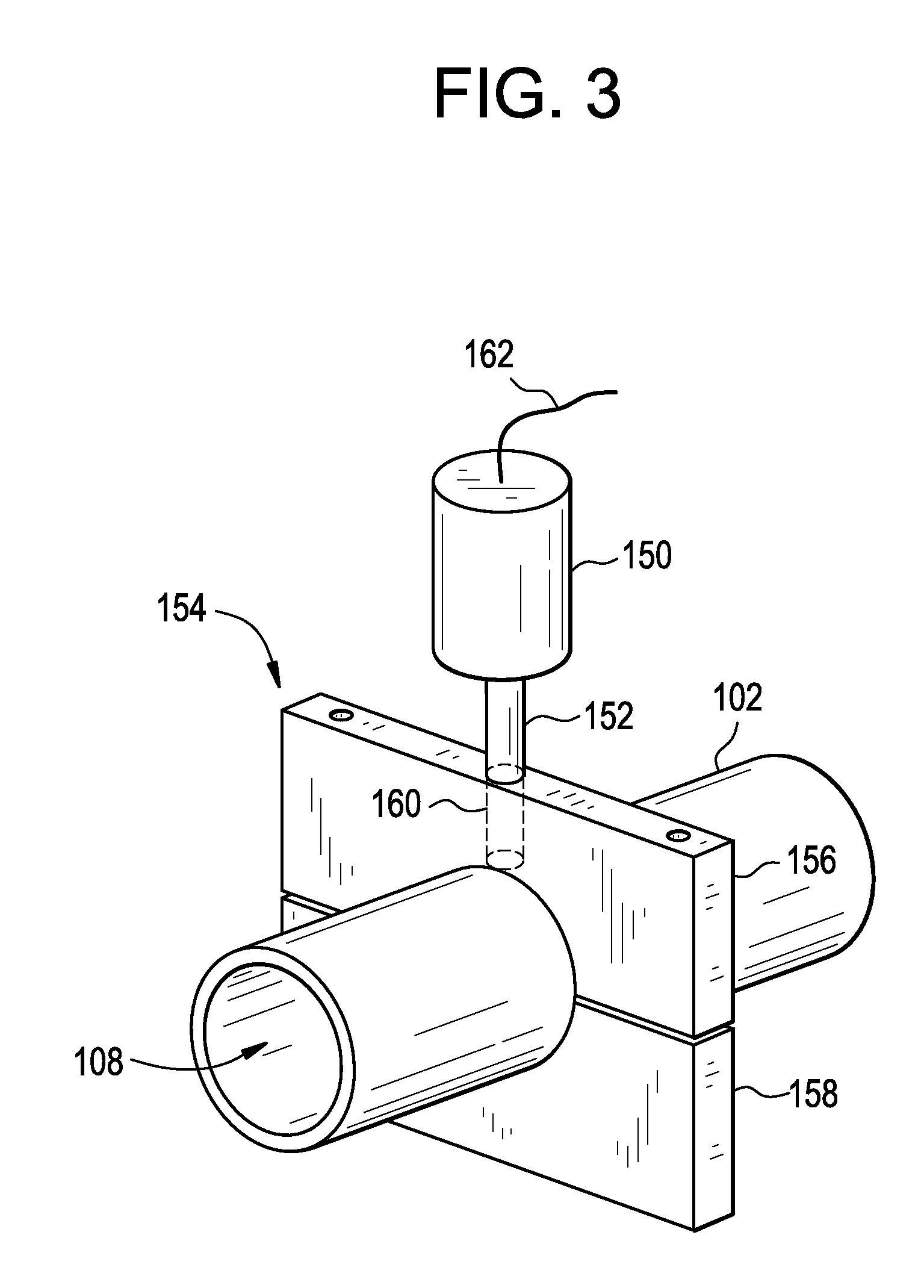Soot Pressing for Optical Fiber Overcladding
a technology of optical fiber and cladding, applied in the field of soot pressing for optical fiber overcladding, can solve the problems of inability to meet the requirements of the application, so as to reduce the diameter of the rolled sheet
- Summary
- Abstract
- Description
- Claims
- Application Information
AI Technical Summary
Benefits of technology
Problems solved by technology
Method used
Image
Examples
example 1
In this example, two optical fiber preform assemblies are prepared by loading the mold cavity with silica glass soot in a single step. To form the optical fiber preform assembly, a glass core cane 1.9 cm in diameter and two stress rods of 24 mm in diameter are positioned in a carbon mold having a mold cavity 89 mm in diameter and a length of 610 mm. The mold cavity is lined with a vitreous carbon coating. The length of the glass core cane in this example is the same as the length of the mold.
The glass core cane is positioned in the mold cavity by inserting an end of the glass core cane in the bore of a ram positioned in the lower portion of the mold cavity. The stress rods are also positioned in the mold cavity by inserting an end of each stress rod in the (off-axis) bore of a ram positioned in the lower portion of the mold cavity. About 930 g of silica glass soot is added to the mold cavity such that the glass core cane is centered in the silica glass soot and the stress rods are p...
example 2
In this example, an optical fiber preform assembly is prepared by loading silica glass soot in the mold cavity in discrete portions and pressing each portion before adding a subsequent portion. To form the optical fiber preform assembly, a glass core cane 19 mm in diameter, and two stress rods of about 24 mm in diameter are positioned in a segmented aluminum mold having a mold cavity 89 mm in diameter and a length of 610 mm. The segmented mold consists of three panels each comprising ⅓rd of the circumference of the mold, and are held together by bolts machined into the outer perimeter of the mold material. The mold cavity is lined with a tight fitting Teflon sheet of thickness of 0.5 mm. The length of the glass core cane and stress rods in this example is the same as the length of the mold. The glass core cane and mold rods are positioned in the mold cavity by inserting an end of the glass core cane and the ends of the mold rods in the bore of a ram positioned in the lower portion o...
example 3
To manufacture an optical preform for making optical fiber, such as the single polarization and / or polarization maintaining fiber with a geometry similar to that shown in FIG. 8C, the positions of the three glass rods (a core rod and two stress rods) in mold assembly are calculated first. In this example, in order to produce a fiber preform, we start with soot that has tap density of 0.6 g / cc. Prior experiments demonstrated that a compacted preform with soot density of 0.85 g / cc. consolidates with axial shrinkage of 19% and radial shrinkage of 29%. An elliptical mold cavity and ram design can compensate for the non-circularly symmetrical position of the glass rods (i.e., for rods being located along one axis of the ellipse, and not along the other axis). In the resultant sintered preform, along the axis containing the core cane and two stress rods, only 35% of the radial profile is glass that originates from compressed soot, while in the orthogonal diameter, 89% of the glass origina...
PUM
| Property | Measurement | Unit |
|---|---|---|
| Temperature | aaaaa | aaaaa |
| Fraction | aaaaa | aaaaa |
| Fraction | aaaaa | aaaaa |
Abstract
Description
Claims
Application Information
 Login to View More
Login to View More - Generate Ideas
- Intellectual Property
- Life Sciences
- Materials
- Tech Scout
- Unparalleled Data Quality
- Higher Quality Content
- 60% Fewer Hallucinations
Browse by: Latest US Patents, China's latest patents, Technical Efficacy Thesaurus, Application Domain, Technology Topic, Popular Technical Reports.
© 2025 PatSnap. All rights reserved.Legal|Privacy policy|Modern Slavery Act Transparency Statement|Sitemap|About US| Contact US: help@patsnap.com



